Posts for: jakraig
Sep 8, 2021 09:15:11 #
rmalarz wrote:
Stan, if you are limiting your photography to landscape your choice of 12mm and 18~55 should do the trick. If you intend to try for some wildlife, then the 55~200 should be part of your kit.
--Bob
--Bob
I think you will find the 55-200 too short for wildlife. If you have an extremely high resolution camera you might get away with it but don't bet on it. There are compact zooms you can rent that are longer. On trips I've wasted effort with even the 70-300. I'm finally getting decent wildlife with my 150-600. I highly recommend at least 500 for wildlife. The shorter lenses work well in zoo's where you can get close. On occasion I've been close enough with a short lens in the wild but it's a rare opportunity. When it's a bear or buffalo getting close enough is a little scary.
Sep 7, 2021 14:35:37 #
stanperry wrote:
Right. I’m using a Nikon D500. My price range is cheap with good quality (unreasonable of course, but it is what it is)
I have found the Tamron 15-30 is great for that and it's an f:2.8. not terribly expensive either.
Oct 3, 2019 12:33:14 #
Katydid wrote:
jakraig, I am wondering if your reply, below, was meant for another post by someone else? I have a Tamron 18-400, not the 150-600. I love your photos, though!
____________________________________________________________________________
Since Katydid was at the shore I thought I would send a few pictures from the shore from my newest lens. I would love to have an 18-400 lens but the D810 is full frame and I would hate to cut my resolution to use it. I have been impressed with Tamron lenses. I have their 24-70 2.8 and find it is as sharp at 50mm as my Nikor 50 1.4G even when I stop down the 50.
I'm going back down to Florida soon and plan to go over to the Everglades to see what I can find. I have been there before but when I went before my longest lens was a Nikon 70-300. I liked the lens well enough most of the time but it often had trouble with focus, I don't miss it. Something I picked up on a spur of the moment purchase in a used camera shop is an older Nikon 70-210 f:4. Oh my goodness is it sharp. I seriously love this lens, I got it super cheap, maybe a hundred dollars or so, I don't remember exactly but it is worth it's weight in gold as far as I'm concerned. I has very nice bokeh although not quite as nice as the Tamron 24-70 f:2.8. It is very nice for portraiture. I have used my 50 for portraiture because of the amazing bokeh but the sharpness of the eyes that the 70-210 produces is magic. I've never seen a lens this sharp. I have never had to add sharpening to shots from this lens.
Sep 30, 2019 17:43:34 #
I live in Kentucky but have a place in Cape Coral, FL so I get down there several times a year especially in the winter. I took a few pictures in early spring of this year down on Pine Island. Florida has done a lot to encourage the restoration of the native Ospery, it is working.
I used my D810 with the Tamron 150-600 G2. The singing Osprey was taken at 600mm, usually a pretty difficult shot for a long zoom. The reviews I read said you don't want to use it past 500mm but with Nikon you can tune it to your camera, I did and think it is wonderful.
I used the same lens for the Osprey in the water, again fully zoomed.
While trying to decide if I should get the Tamron 150-600 friends told me I wouldn't like it because of the constant aperture. I have had such good success with higher ISO shots that I decided to get it anyway. I have found that out doors, which is about the only place you would use this lens, that there is plenty of light for this lens. The Great Blue Heron is an example. An early spring morning shooting wide open and zoomed all the way. Since the bird was not moving I slowed down the shutter to 1/60th and then had pretty low ISO at 160. You wouldn't think at 1/60th I could get a sharp picture but, the D810 in continious mode allows the middle shot of 3 or 4 shots to be pretty good because you aren't moving anything, even the shutter button.
The picture of the osprey on the nest is an example of how difficult focus can be on a moving target with interference in front of the target. I tried to compensate by stopping down, way down to f:11 to increase the depth of field but while it helped a little it didn't quite get it. I still like the picture, misfocus and all.
In the next picture I really wanted to catch this guy taking a nap but again my focus was miserable because of the interference with the nest between me and the bird. Again I tried f:11, better than nothing but really disappointing.
The pelicans are difficult when you can't get close. I'm standing on the beach and these guys are pretty far out. The problem is not the Tamron 150-600 it is just what I'm asking it to do. The one labeled "fly by" came out ok, it is in focus and exposure is almost good but the one labeled Pelican 2 is just too far away and completely missed the focus. When you are shooting a moving target sometimes you win and sometimes you loose.
The moral of my story is. 2.8 is nice if you can get it but you can get shots with smaller lenses.
I used my D810 with the Tamron 150-600 G2. The singing Osprey was taken at 600mm, usually a pretty difficult shot for a long zoom. The reviews I read said you don't want to use it past 500mm but with Nikon you can tune it to your camera, I did and think it is wonderful.
I used the same lens for the Osprey in the water, again fully zoomed.
While trying to decide if I should get the Tamron 150-600 friends told me I wouldn't like it because of the constant aperture. I have had such good success with higher ISO shots that I decided to get it anyway. I have found that out doors, which is about the only place you would use this lens, that there is plenty of light for this lens. The Great Blue Heron is an example. An early spring morning shooting wide open and zoomed all the way. Since the bird was not moving I slowed down the shutter to 1/60th and then had pretty low ISO at 160. You wouldn't think at 1/60th I could get a sharp picture but, the D810 in continious mode allows the middle shot of 3 or 4 shots to be pretty good because you aren't moving anything, even the shutter button.
The picture of the osprey on the nest is an example of how difficult focus can be on a moving target with interference in front of the target. I tried to compensate by stopping down, way down to f:11 to increase the depth of field but while it helped a little it didn't quite get it. I still like the picture, misfocus and all.
In the next picture I really wanted to catch this guy taking a nap but again my focus was miserable because of the interference with the nest between me and the bird. Again I tried f:11, better than nothing but really disappointing.
The pelicans are difficult when you can't get close. I'm standing on the beach and these guys are pretty far out. The problem is not the Tamron 150-600 it is just what I'm asking it to do. The one labeled "fly by" came out ok, it is in focus and exposure is almost good but the one labeled Pelican 2 is just too far away and completely missed the focus. When you are shooting a moving target sometimes you win and sometimes you loose.
The moral of my story is. 2.8 is nice if you can get it but you can get shots with smaller lenses.
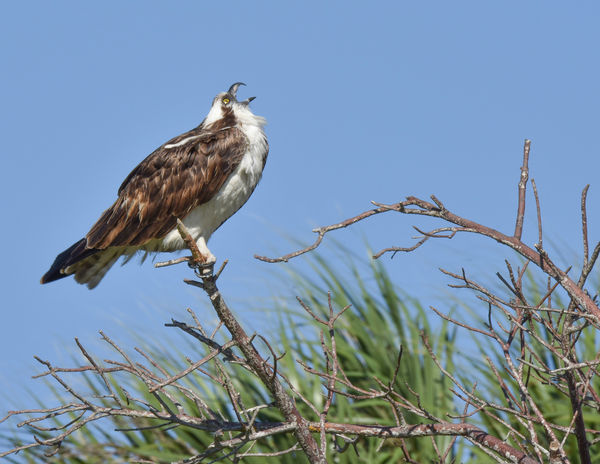
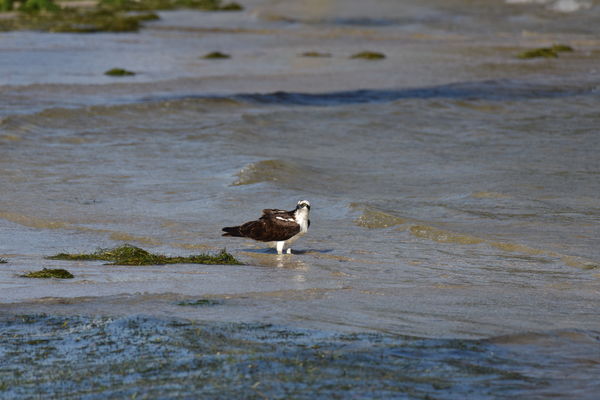

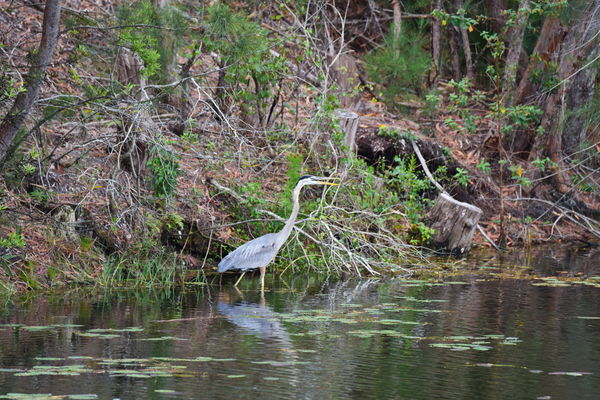
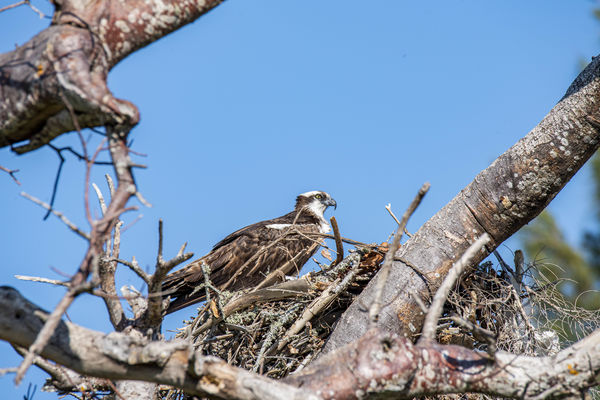
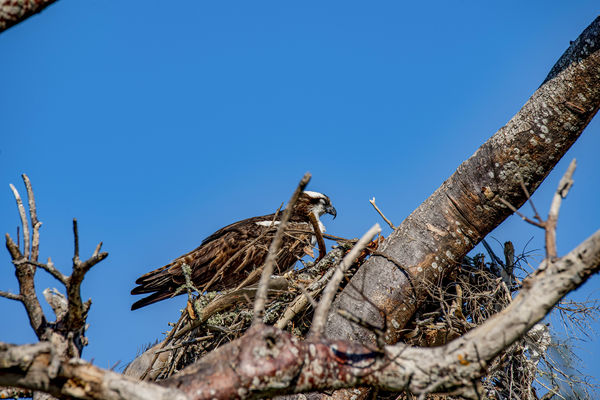
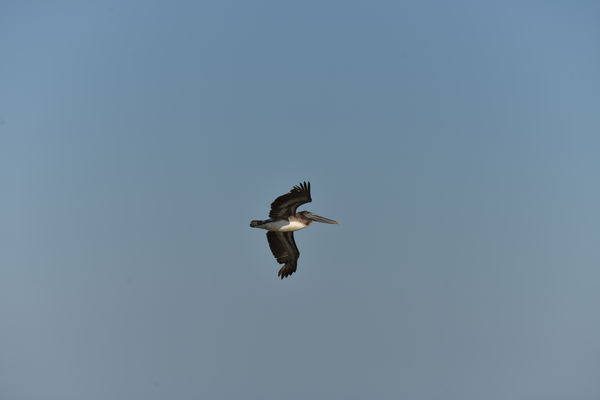
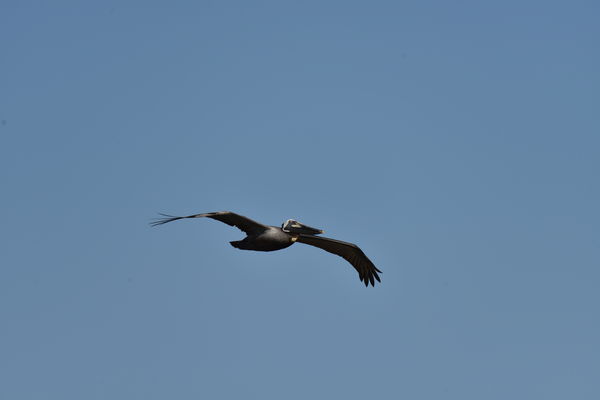
Sep 30, 2019 10:55:26 #
I shoot with Nikon equipment right now. I have used the D300, D3200, the D800 and am still using the D810 as I have not wanted to abandon the on camera flash.
I shoot RAW + fine JEPG. Mostly I use the JEPG for reviewing shots to determine what I want to do post processing on. The Nikon has several settings to adjust the JEPG for what you want to accomplish and they are very good on their own. I am really impressed with dynamic range of my D810 and am usually unwilling to share any picture without trying to get all I can of it. Many testers will say the 810 has a dynamic range capability of over 14 stops. I doubt that it that good on most pictures but it really is good. The RAW filter in Adobe PS CC is great at helping me get all the range the camera has to offer. While processing the JEPG in Camera Raw on CC will allow me a little more range the work on a RAW shot is MUCH better. So to answer your question, NO, I don't think I would ever share a shot without some post.
I have attached a little snapshot as an example. the original JEPG ahadow areas were all pretty dark, nearly black because of the brightness of the of the sunlit areas. bringing down the highlights and bringing up the shadows lets me see all there was to see of this little hidden gem in a garden.
I shoot RAW + fine JEPG. Mostly I use the JEPG for reviewing shots to determine what I want to do post processing on. The Nikon has several settings to adjust the JEPG for what you want to accomplish and they are very good on their own. I am really impressed with dynamic range of my D810 and am usually unwilling to share any picture without trying to get all I can of it. Many testers will say the 810 has a dynamic range capability of over 14 stops. I doubt that it that good on most pictures but it really is good. The RAW filter in Adobe PS CC is great at helping me get all the range the camera has to offer. While processing the JEPG in Camera Raw on CC will allow me a little more range the work on a RAW shot is MUCH better. So to answer your question, NO, I don't think I would ever share a shot without some post.
I have attached a little snapshot as an example. the original JEPG ahadow areas were all pretty dark, nearly black because of the brightness of the of the sunlit areas. bringing down the highlights and bringing up the shadows lets me see all there was to see of this little hidden gem in a garden.
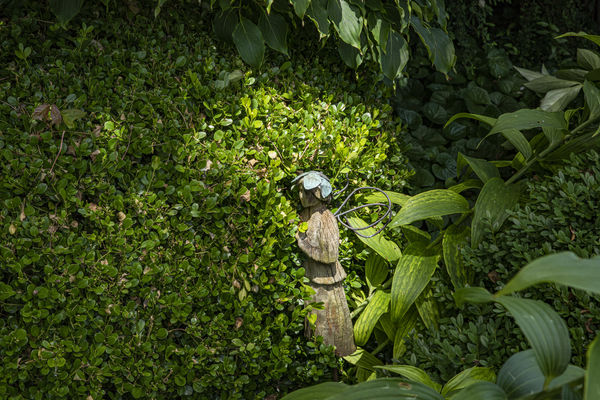
Aug 19, 2019 15:25:18 #
I should have included this one too, probably impossible to get this with my phone. I'm sure this could be taken just as well by most modern cameras, certainly including mirror-less. But what I have works, I'm not sure what would be better about mirror-less except for size and sound.
Camera technology is such today that nearly any digital camera on the market today is better than most any 35mm film camera. Medium format is still competitive with digital but it won't be soon.
The dynamic range on a quality camera today is nearly 15 stops. There isn't much film that can do that, certainly not many films that can do that in a wide variety of settings. I shot film for 45 years. I don't even know where my film cameras are now.
Camera technology is such today that nearly any digital camera on the market today is better than most any 35mm film camera. Medium format is still competitive with digital but it won't be soon.
The dynamic range on a quality camera today is nearly 15 stops. There isn't much film that can do that, certainly not many films that can do that in a wide variety of settings. I shot film for 45 years. I don't even know where my film cameras are now.
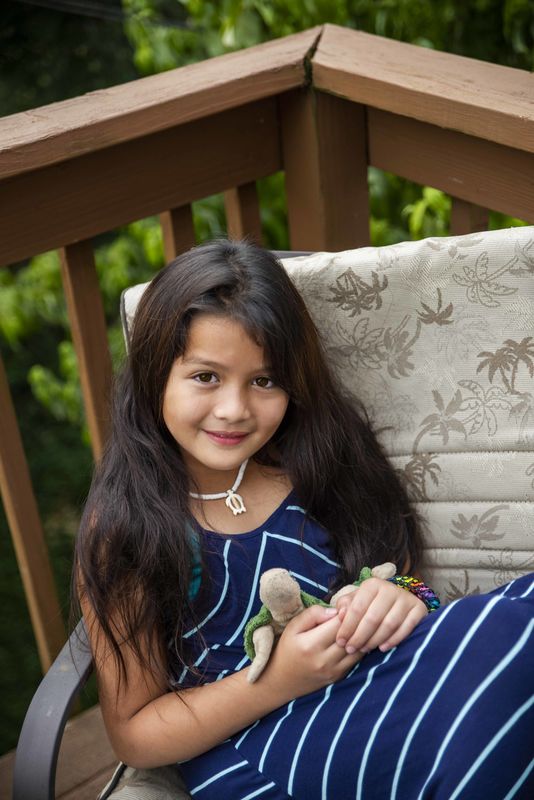
Aug 19, 2019 15:12:04 #
Certainly shot selection is the first of important things that must be done, but . . .
Being able to crop, enlarge, white balance and color correct are pretty wonderful things that mostly I can't do on my phone camera or at least not as well. I have a really nice phone camera, my Note 8 but I am spoiled by my Nikon D810.
Camera selection is a relative thing. While at arches National park I ran into a couple of D850 shooters who said that if I ever tried the D850 I would throw my 810 away, well perhaps.
One nice thing about my phone camera is that I ALWAYS have it with me. The best camera to use is the one you have with you.
I may go mirrorless one day, but not today.
It was past sunset last night when I took a couple grandkid pictures, I could have gotten a picture with my phone but not nearly as nice as this.
Being able to crop, enlarge, white balance and color correct are pretty wonderful things that mostly I can't do on my phone camera or at least not as well. I have a really nice phone camera, my Note 8 but I am spoiled by my Nikon D810.
Camera selection is a relative thing. While at arches National park I ran into a couple of D850 shooters who said that if I ever tried the D850 I would throw my 810 away, well perhaps.
One nice thing about my phone camera is that I ALWAYS have it with me. The best camera to use is the one you have with you.
I may go mirrorless one day, but not today.
It was past sunset last night when I took a couple grandkid pictures, I could have gotten a picture with my phone but not nearly as nice as this.
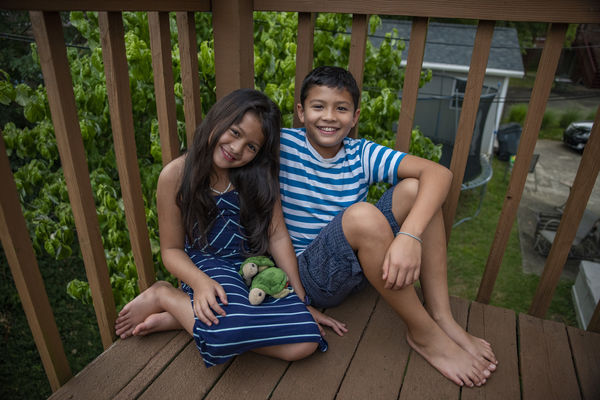
Aug 15, 2019 16:15:51 #
This is an issue that every digital photographer has to contend with at some time or another. Congratulations on having a fine starter camera. It will allow you to take very excellent pictures. Your camera is more functional and has more dynamic range than any digital camera just 10 years ago.
I shoot Nikon and have had several models and liked them all. I was pleased with the JEPG's I shot and didn't know what to do with the RAWs until after I got Photoshop. I used an Adobe converter to convert the NEF into DNG and then was able to edit the raw in most any editor. What I was able to then get from my RAWs really astounded me. Nikon does a wonderful job in creating JEPG in the camera but to really take advantage of all the dynamic range you have available you will need to process it yourself in a quality editor. You can of course edit your JEPG's but there is not enough data in the JEPG's to do dramatic edits, you might get a couple f stops of adjustment sometimes but with RAW you see what the camera saw. It isn't unusual to recover 7 or 8 stops in shadows, it is phenomenal. If you shoot and then edit with RAW you suddenly think of yourself as a photographer.
The camera will do a good job of capturing what is there but it will be up to you and Photoshop or other editor, and there are other fine editors, to bring out the best photo.
I personally always keep the original RAW and JEPG together. it makes it easy to see what the picture is because some picture viewers will not have decoders for the latest, greatest RAW code but everything decodes JEPG. After you edit the RAW the original will remain untouched but will have a companion file now so that when you load it your changes will be shown. If you save the file as a JEPG and most of us do at some point you will want to give it a descriptive name often with the first part of the name the name of the shoot, like "Arches Park 2019 3 gossips at sunset.JEPG". That is me but others have totally other methods that are wonderful and just as functional as mine is to me.
I have attached a picture from this "I:\DCIM\Utah Trip Summer 2019\Arches\small" directory. It was converted to JEPG from RAW on a Nikon 810. The original JEPG was nearly 20MB but the attached file is less than one MB. If you wanted to edit this picture from the attached file it would be difficult to do much with it but from the original RAW you have a great deal of latitude. I have also attached the same picture with less compression. That file is a little more editable if you like because more data was included but there is a price to pay of size. I did not include the RAW it is kind of large. When you include the name of the file "three gossips with a longer lens small.jpg" with the location it becomes pretty descriptive. Five years from now when you see this title you will know exactly what it was.
The display in this program will not really show the differences between the two attached files but if you download them it will be easy to see the loss of data. If you download them and try to edit them you will see even more clearly.
The 24 MPG 3300 generates a small file compared to more expensive larger cameras but they still add up. I think I would rather have several 32gig cards than a 64 or 128 card, that way if you lose it or destroy it you hove lost less. If you are traveling don't wait to transfer to your HD. If you are staying in a motel or at friends or family, excuse yourself and get the files transferred. If you have extra memory cards use a new one each day until you have done your editing on all of them. Then it isn't as important to have extra backups because once you have completed editing a job and are going on to other projects you will seldom if ever come back to the unedited files, the one backup should be enough for most of us. If you are really paranoid consider getting a Blue Ray to store backups on along with your portable HDD.
I shoot Nikon and have had several models and liked them all. I was pleased with the JEPG's I shot and didn't know what to do with the RAWs until after I got Photoshop. I used an Adobe converter to convert the NEF into DNG and then was able to edit the raw in most any editor. What I was able to then get from my RAWs really astounded me. Nikon does a wonderful job in creating JEPG in the camera but to really take advantage of all the dynamic range you have available you will need to process it yourself in a quality editor. You can of course edit your JEPG's but there is not enough data in the JEPG's to do dramatic edits, you might get a couple f stops of adjustment sometimes but with RAW you see what the camera saw. It isn't unusual to recover 7 or 8 stops in shadows, it is phenomenal. If you shoot and then edit with RAW you suddenly think of yourself as a photographer.
The camera will do a good job of capturing what is there but it will be up to you and Photoshop or other editor, and there are other fine editors, to bring out the best photo.
I personally always keep the original RAW and JEPG together. it makes it easy to see what the picture is because some picture viewers will not have decoders for the latest, greatest RAW code but everything decodes JEPG. After you edit the RAW the original will remain untouched but will have a companion file now so that when you load it your changes will be shown. If you save the file as a JEPG and most of us do at some point you will want to give it a descriptive name often with the first part of the name the name of the shoot, like "Arches Park 2019 3 gossips at sunset.JEPG". That is me but others have totally other methods that are wonderful and just as functional as mine is to me.
I have attached a picture from this "I:\DCIM\Utah Trip Summer 2019\Arches\small" directory. It was converted to JEPG from RAW on a Nikon 810. The original JEPG was nearly 20MB but the attached file is less than one MB. If you wanted to edit this picture from the attached file it would be difficult to do much with it but from the original RAW you have a great deal of latitude. I have also attached the same picture with less compression. That file is a little more editable if you like because more data was included but there is a price to pay of size. I did not include the RAW it is kind of large. When you include the name of the file "three gossips with a longer lens small.jpg" with the location it becomes pretty descriptive. Five years from now when you see this title you will know exactly what it was.
The display in this program will not really show the differences between the two attached files but if you download them it will be easy to see the loss of data. If you download them and try to edit them you will see even more clearly.
The 24 MPG 3300 generates a small file compared to more expensive larger cameras but they still add up. I think I would rather have several 32gig cards than a 64 or 128 card, that way if you lose it or destroy it you hove lost less. If you are traveling don't wait to transfer to your HD. If you are staying in a motel or at friends or family, excuse yourself and get the files transferred. If you have extra memory cards use a new one each day until you have done your editing on all of them. Then it isn't as important to have extra backups because once you have completed editing a job and are going on to other projects you will seldom if ever come back to the unedited files, the one backup should be enough for most of us. If you are really paranoid consider getting a Blue Ray to store backups on along with your portable HDD.
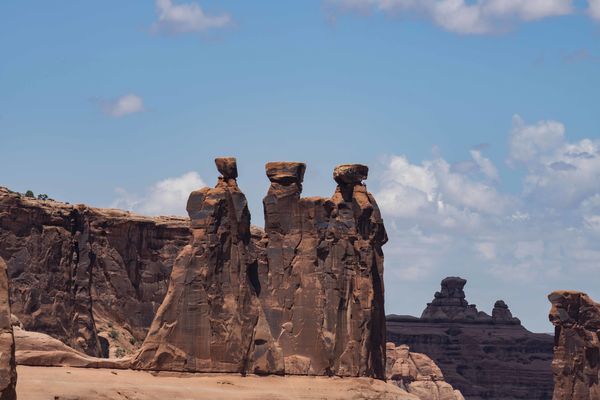
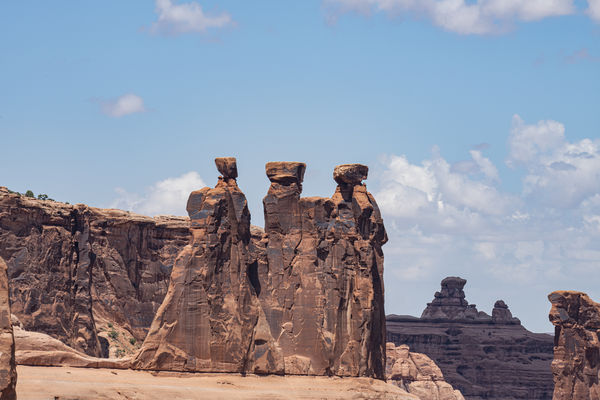
Mar 13, 2019 16:29:55 #
To each his own so they say. I had a D300 and then got a D3200 and was shocked that my cheap camera was much better than my go to camera. A friend had a D800, after using it I threw rocks at my D300. I bought the D800 and later got the D810.
Now DX is really nice as long as you never see an FX. I sold all my DX equipment and now am in love with my D810. The D500 is a fine camera but shooting flowers is a task for a lot of resolution as is any landscape. The D500 is a wonderful sports camera but not as versatile as the D3500, The D7500 or any of the new sensors but if you like low light then FX is for you. If you like to crop your images, FX is for you. If you like to spend money FX is for you.
In all seriousness what I have said above is true, FX is out of this world but it comes at a price. The body costs more and the lenses cost more but I gotta a say I don't regret moving to FX,
Now DX is really nice as long as you never see an FX. I sold all my DX equipment and now am in love with my D810. The D500 is a fine camera but shooting flowers is a task for a lot of resolution as is any landscape. The D500 is a wonderful sports camera but not as versatile as the D3500, The D7500 or any of the new sensors but if you like low light then FX is for you. If you like to crop your images, FX is for you. If you like to spend money FX is for you.
In all seriousness what I have said above is true, FX is out of this world but it comes at a price. The body costs more and the lenses cost more but I gotta a say I don't regret moving to FX,
Mar 4, 2019 14:58:56 #
I added grips to my D800 and D810. They don't seem to add much to the weight but the extra battery life is fantastic. Every once in a while I'll pull the camera up and not have it in the orientation I thought I was holding it in, other than that I don't see a down side to grips.
By the way I have always bought 3rd party grips and never had one that didn't hold up well, feel good or not work well and fit the camera. I'm just cheap.
I have not shot the D500 although I have spoken to a few owners who love them. I once had a D3200, I loved the little thing and got very nice pictures with it but like all the lower number Nikons they miss certain items. There are some that will argue that because of pixel density that the larger cameras can't perform well in low light. The best low light camera I have ever used is the D700, It is still a great low light performer. I've never had a D3,4 or 5 but I know they are better than the D700 but they are also MUCH more expensive. I think my D810 is on par with the D700 in low light performance and the D800 is close behind that. For me if you can shoot a decent picture at ISO 6400 you have something special, there just aren't that many times when you need ISO 20000+.
I think the absolutely best value in cameras right now are used D800's and right next to that is D810's. You can find 800's with 20000 clicks under $1000. You can find 810 with 20000 clicks under $1200. 20000 is practically brand new. The 800's are sharp and the 810 are unbelievably even sharper. If you want a lot of video the 810 will be a better camera but for stills either are just wonderful for a very low price.
If you are a newer photographer the 800 and 810 have wonderful options for their Auto ISO which allow you to catch well lighted photo's every shot. Even if you aren't new to photography the Auto ISO mode on these cameras will allow you to shoot in Manual right from the start like a pro.
By the way I have always bought 3rd party grips and never had one that didn't hold up well, feel good or not work well and fit the camera. I'm just cheap.
I have not shot the D500 although I have spoken to a few owners who love them. I once had a D3200, I loved the little thing and got very nice pictures with it but like all the lower number Nikons they miss certain items. There are some that will argue that because of pixel density that the larger cameras can't perform well in low light. The best low light camera I have ever used is the D700, It is still a great low light performer. I've never had a D3,4 or 5 but I know they are better than the D700 but they are also MUCH more expensive. I think my D810 is on par with the D700 in low light performance and the D800 is close behind that. For me if you can shoot a decent picture at ISO 6400 you have something special, there just aren't that many times when you need ISO 20000+.
I think the absolutely best value in cameras right now are used D800's and right next to that is D810's. You can find 800's with 20000 clicks under $1000. You can find 810 with 20000 clicks under $1200. 20000 is practically brand new. The 800's are sharp and the 810 are unbelievably even sharper. If you want a lot of video the 810 will be a better camera but for stills either are just wonderful for a very low price.
If you are a newer photographer the 800 and 810 have wonderful options for their Auto ISO which allow you to catch well lighted photo's every shot. Even if you aren't new to photography the Auto ISO mode on these cameras will allow you to shoot in Manual right from the start like a pro.
Mar 1, 2019 10:26:55 #
One of the real advantages of back button focusing is that you can get the focus where you want it and leave it alone. Get it set and take all the pictures you want without refocusing in the same spot. Don't re-focus until you change where you are shooting.
Another thing to remember is where the sweet spot is in your lens for sharpness. We often have a tendency to open our aperture up as far as possible to get as much light as possible, don't do it if you don't have to absolutely do it to get the shot. Go ahead and stop down a little bit and use some ISO get the sharpness your lens and camera are capable of. If you really need the bokeh then fake it later in PS.
All the other information above in all the posts is pertinent but, learn how to use your back focus button to it's greatest advantage and you will get more very sharp pictures.
Another thing to remember is where the sweet spot is in your lens for sharpness. We often have a tendency to open our aperture up as far as possible to get as much light as possible, don't do it if you don't have to absolutely do it to get the shot. Go ahead and stop down a little bit and use some ISO get the sharpness your lens and camera are capable of. If you really need the bokeh then fake it later in PS.
All the other information above in all the posts is pertinent but, learn how to use your back focus button to it's greatest advantage and you will get more very sharp pictures.
Mar 1, 2019 09:57:24 #
bpulv wrote:
To answer your last question first, the price of t... (show quote)
______________________________________________________________________________
First I gotta say, these are all very nice cameras you can get some very good shots with any of them. I, few years ago I got rid of my older cameras after shooting with several other newer Nikon cameras and purchased a D800. I was in heaven, I had no idea a camera could be so good. I have since added a D810.
Full frame cameras really do a nice job at higher ISO's that I could have never shot with on the others cameras. The high resolution of Nikon's newer cameras is amazing and give you tremendous flexibility in cropping. You would't think the difference between 24 and 36 megapixel would matter but it really does. I thought the D5600 was the cats meow after the D300 until I shot with an 800.
So after all that above it seems like I have dissed your other options, and perhaps I have. Because the D810 and D850 have come out many 800 owners have sold their 800 to get the 850. I haven't, the 850 has no built in flash and I really like CLS in the studio or even on location. I know, I could just go buy some wireless but. . . . .
Anyway, again all the cameras on your list are pretty good, if you are doing sports go ahead and get the 500 for the rapid fire but if you do portraiture or landscape by all means go find a used D800 or even perhaps 810, both are cheap on the used market right now. Both take indescribably wonderful photos, both do it well in fairly low light. When I had a D700 I thought it the best low light camera that could ever have been made, the 800 runs right with it but has all that resolution to boot.
When making a decision on Full Frame or Cropped sensor people will say the cropped will give you a longer reach with the same lens, it isn't really true. The cropped sensor just takes the middle of the lens for a picture. The FF takes the exact same image but also gives you a wider view. If you want your FF to have the same range of the cropped sensor just crop the image. It will be the same ending resolution. there simply is no advantage to Cropped sensor except for price. Now price is a big word and FF accessories and lenses are pricey compared to Cropped accessories and lenses. The shock of changing to FF was pretty hard but what I get is simply wonderful.
FF is not for the faint of heart. The body and lenses are much heavier and larger than cropped. The 24mp sensors are very good, good enough that you will throw rocks at your old 7000. There is no way to describe how wonderful the Nikon 36mp sensor is, borrow one and see for yourself, you will never go back.
I highly recommend one of the Nikon D8--'s if you are into sports the D500 is pretty good but the D850 although not perhaps quite as fast is pretty fast and a wonderful camera. Good Luck.
Aug 16, 2018 12:25:20 #
rmalarz wrote:
In the first set note the pen with which the offic... (show quote)
Bob, you obviously haven't tried a D850 yet, it shames your pitiful examples.
Aug 16, 2018 12:17:14 #
cameraf4 wrote:
Very good points, Alan. And well written, too. About the older Nikon glass, I wouldn't recommend them on APS-C (DX) Nikons, even though many may "work", for the reasons you have given. That said, I use Nikon FX DSLRs and the older lenses (AF and manual focus) work on my FX digitals, in some cases better than they ever did on film SLRs.
I'm old so I have used a lot of old glass although I don't have most of it any more, but, there is one extraordinary lens in that classification, the Nikon 70-210 F:4. What a wonderful crisp lens from end to end. They are still to be had today at really cheap prices. If you see one snap it up, you will be impressed.
Aug 14, 2018 17:16:58 #
BebuLamar wrote:
Why inkjet prints are sharper?
Inkjet printers can definitely be sharper than enlarged prints. When you print at home on your enlarger a lot depends on basically taking another picture. You first took it in your camera and now you project it onto paper that may not be precisely flat where a lot depends on the quality of your enlarger. If you have a good quality enlarger and you shoot through clean glass to keep your paper flat and you don''t have ANY light leaks in your dark room and your chemicals are at the right temperature you MAY get a pretty good print. If you send it off it's no telling what you will get back. When you use say a Pixma Pro-10, -100 or -1000 you don't worry about any of those things and the 5th print will look exactly like the 1st print, no degradation of the chemicals no matter how many prints you make. No matter whose paper and chemicals you use you will see fading of you prints in a matter of a few years unless you keep them in the dark and in the freezer. If you use a Canon Pixma Pro-10 or 1000 you won't see degradation for a hundred years. The Pro-10 and 1000 use pigments instead of dyes. No matter what you do to light sensitive paper it will always be light sensitive more or less. Unfortunately dyes fade over time and I think dye prints fade faster than photographic paper.
We can all talk about the random resolution of film. Some of it is just spectacular but unless you use 8 X 10 film and then make a contact print from it you can't possibly ever take advantage of the resolution of film, it's a nice thought but you just can't do it. All cameras are limited in their ability to record image resolution by their lens. I doubt that there are any lenses equal to the digital sensors or films that can be had today. Whatever you record on film has to be projected and re-recorded on paper so that it isn't really proper to talk about one without the other. the same is true for digital recording, it really doesn't make sense to talk about how wonderful a lens sensor set is until you know how it is going to get to paper.
One advantage digital has is that it can be transfered from one place, or medium to another losslessly. I'm not sure losslessly is a real word but you know what I mean. Movie companies no longer use film to produce movies, nearly everything you see on the silver screen is now produced digitally. There a a variety of reasons for that but most people have not noticed the difference.
When I first moved to digital well over a decade ago I was terribly dissapointed but now I wouldn't consider going back. After the D3200 from Nikon came out I knew it was the end of film.
The ability to shoot at ISO 64 on one frame and the next at 6400 means I only have to have one camera with me to get ANY shot. Say what you will about thinking through the process of getting the shot right the first time, digital film is cheap. You just don't have to get it right the first time. Digital is forgiving. You never have to heat chemicals or develop longer to try to get more out of your film. With 15 stops of DR just play with it in PS until it's right.
I love my digital.